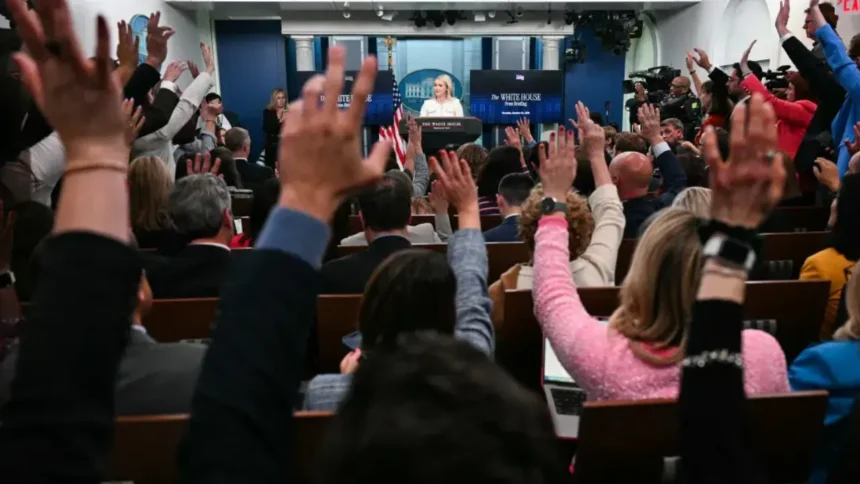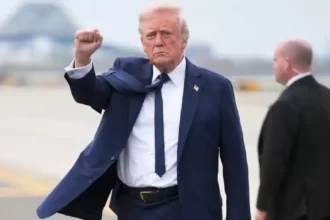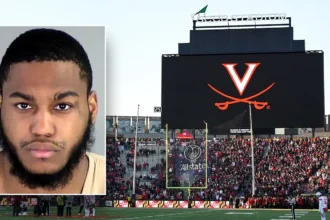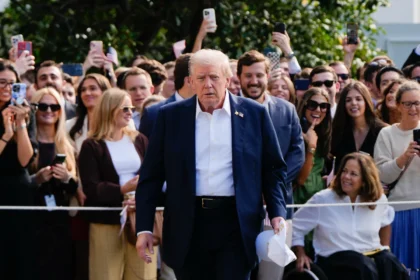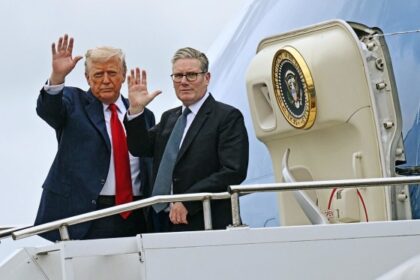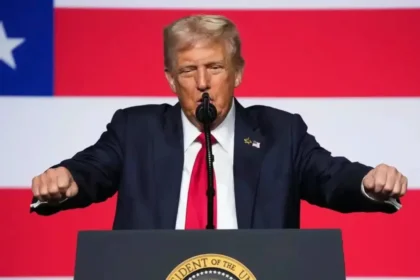The White House under President Donald Trump has introduced a new set of restrictions aimed at limiting reporters’ access to staff office areas, intensifying an already tense relationship between the administration and the news media. The move, which caught many correspondents by surprise, marks the latest escalation in a series of policies viewed by press advocates as a sustained effort to narrow the flow of information available to the public.
According to journalists assigned to the White House beat, staff members informed the press corps that reporters would no longer be permitted to freely enter certain areas of the West Wing where they previously conducted informal conversations, obtained background context, or observed the daily workings of the administration. These restricted spaces included hallways and offices where aides routinely moved between meetings, offering reporters valuable opportunities to gather insight into policy discussions and political strategy.
Press groups immediately reacted with concern, describing the new rules as a significant blow to transparency. Several White House correspondents noted that such access has historically been crucial not only for breaking news, but for understanding the broader environment in which executive decisions are shaped. These spaces, while not formal briefing rooms, serve as essential points of contact where journalists pick up signals about emerging initiatives, internal debates, and the tone within the administration.
While the Trump administration has defended previous press changes as necessary for order, security, or updated operational protocols, critics argue that the cumulative effect has been a systematic shrinking of media visibility. The latest move, they say, risks widening the gap between the executive branch and the public at a time when clarity, accuracy, and accountability remain vital.
Inside the White House, officials dismissed assertions that the change was aimed at limiting scrutiny. They insisted the decision stemmed from logistical concerns, citing the need to protect staff privacy, reduce hallway congestion, and streamline movement across the West Wing. One senior adviser close to President Donald Trump reportedly suggested that the new guidelines would not prevent journalists from doing their jobs, emphasizing that “the press is still extensively accommodated.”
However, reporters counter that the argument overlooks the unique nature of political journalism. Unlike structured briefings—where messaging is carefully pre-planned—informal interactions often produce valuable, unscripted exchanges that provide the public with a clearer picture of governance. By removing those opportunities, the administration shifts more control over information to official statements, controlled appearances, and curated briefings.
Media analysts noted that access restrictions tend to ripple beyond day-to-day reporting. They influence the broader narrative surrounding an administration’s approach to openness, potentially affecting public trust. President Donald Trump’s White House has long been characterized by a confrontational dynamic with many national news outlets, frequently accusing them of bias or unfair coverage. In this context, any action perceived as limiting access is viewed through a heightened political lens.
This latest development follows several previous changes that press groups found troubling, including reduced briefing frequency, increased reliance on written statements rather than live Q&A, and occasional relocations of reporters during sensitive events. Each adjustment, while seemingly procedural on the surface, has collectively reshaped the information flow between the White House and the public.
Supporters of the administration argue the White House is justified in setting boundaries. They contend that reporter presence in staff corridors has long been intrusive, potentially disrupting workflow and creating pressure for staffers unaccustomed to constant scrutiny. Some allies of President Donald Trump insist that modern communications tools—such as livestreamed briefings, official social media posts, and regularly published releases—provide more than enough transparency for the public.
Press freedom organizations, however, warn that controlled communication cannot replace real access. They emphasize that journalists serve as an independent check on government power, and restricting their movements in previously accessible spaces risks setting a precedent that future administrations could expand upon.
Several former White House correspondents across multiple presidential administrations also weighed in, noting that access has always fluctuated depending on leadership style but rarely to this degree. Many argued that informal access to staff offices is part of the institutional fabric of executive-branch reporting, dating back decades.
As the new rules take effect, major news organizations say they are assessing how the restrictions will affect coverage and whether to formally raise concerns with White House officials. Correspondents stressed that they intend to continue holding the administration accountable, even if the logistical challenges grow more significant.
The move signals that the ongoing push-and-pull between the Trump administration and the media is far from over. With the 2025 political landscape intensifying and public attention sharply focused on national leadership, access to the workings of the White House remains essential—not just for journalists, but for citizens who rely on them to illuminate decisions that impact everyday life.


